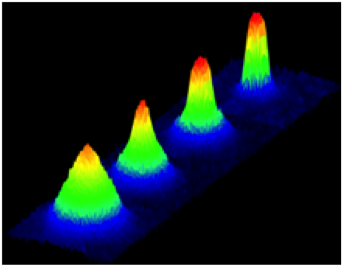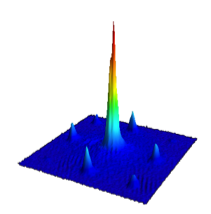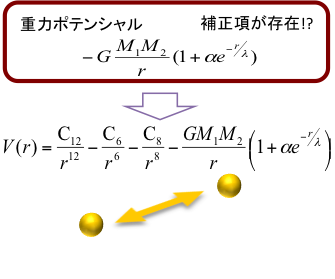
| Staff | Professor | Yoshiro Takahashi |
|---|---|---|
| Associate Professor | Yousuke Takasu | |
| Associate Professor | Koki Ono | |
| Assistant Professor | Shintaro Taie |
| Recent developments of laser-cooling techniques enable us to cool some kinds of neutral atoms to temperatures typically below some tens of nano-Kelvin. At these very low temperatures the atoms do not obey classical but quantum physics and obtain novel properties as quantum degenerate gases in the form of Bose Einstein condensates and Fermi degenerate gases. These quantum degenerate gases offer us attractive experimental methods on various topics such as modern quantum mechanics, quantum many-body physics, quantum information and fundamental physics. New points of view can be explored because of highly controllable experimental parameters, defect free system preparation, and new measurement methods in quantum degenerate gases. We focus on experimental studies using Bose-Einstein condensates and Fermi degenerate gases of ytterbium (Yb) atoms. Our logo image shows the velocity distributions of laser-cooled bosonic atoms: hot atoms are characterized by a broad velocity distribution (left bottom). However, below a certain critical temperature a narrow sharp peak appears (right top), the Bose-Einstein condensate. In the following we will describe our on-going experimental projects, each being unique in approach and topic addressed, in our laboratories. |  |
| Our research addresses various topics, for example, quantum magnetism of cold fermionic atoms with SU(6) spin freedom, quantum magnetism in non-standard optical lattice geometries (e.g. a so-called Lieb lattice), high-resolution spectroscopy and study of Feshbach-resonances with long-lived electrically-excited metastable states, development of a new method to optically control atom-atom interactions, studies towards realization of topological states and quantum annealing. |  |
| We aim to develop new methods for single-site imaging and manipulation of atoms in an optical lattice. These methods may open new studies for ferromagnetism and quantum computation. |  |
| A mixture system of Yb and lithium (Li) is an ideal system for a quantum simulation of an impurity system. Yb and Li correspond to impurities and electrons in a solid state, respectively. The impurity system may be used towards quantum simulations of high-Tc superconductivity, Anderson localization, and a study of the Anderson orthogonality theorem. |  |
| It is possible to measure binding energies of ultracold molecules by use of high-resolution photoassociation spectroscopy. We plan to map interatomic forces on a nano-scale range by systematic measurements of binding energies. In particular we are interested in contributions due to a correction term of the gravity arising from extra-dimension theories of fundamental physics. |  |